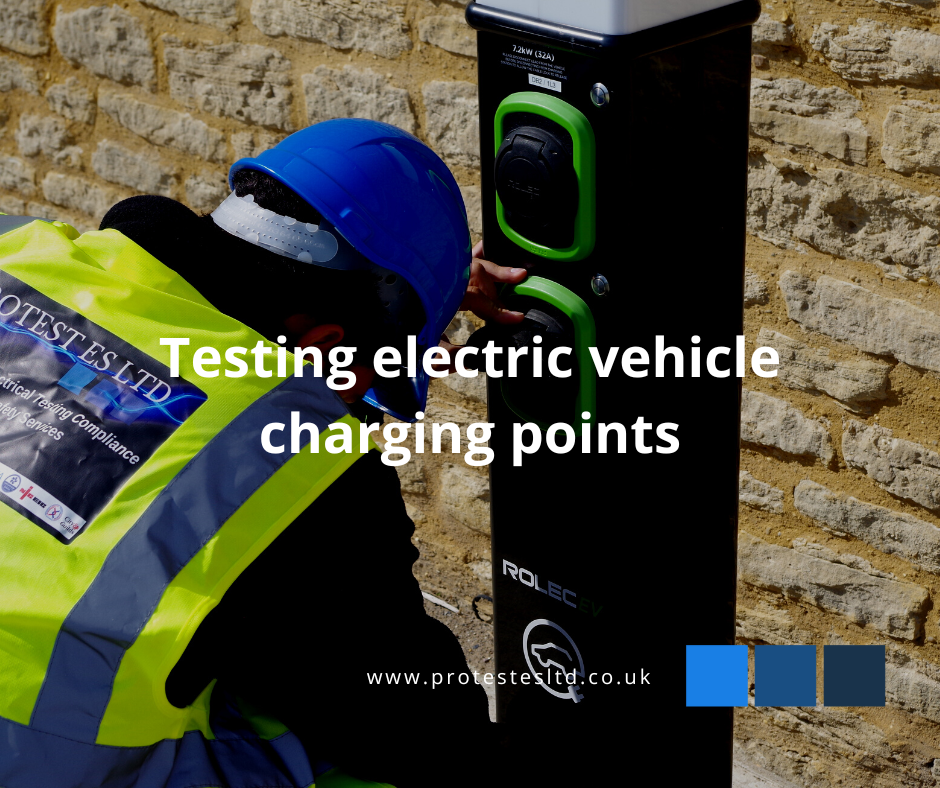Testing electric vehicle charging points – how we do it and what tools we use

EV charging points throughout the world and the UK are becoming a very highly used apparatus, therefore they endure a lot of wear and tear.
This coupled with the fact that the majority of EV charging points are installed for outdoor use and are therefore exposed to the elements too.
This is why as a business we strongly recommend formal periodic inspecting and testing on an annual basis, as well as regular monitoring of the EV systems to help your business and duty holders, meet their legal requirements with regards to maintenance and health and safety of this high functioning equipment.
In order to ensure that they we are fully up to speed with legal requirements, we make sure to always follow best practice.
There are rigorous requirements for the electrical protection built into charging points. The basic requirements, prescribed by the IET Wiring Regulations, are that the charging point should be protected at the circuit source, or integrally in the charging point at the incoming supply position, by a Type A RCD/RCBO and that there should be provision for the supply to be disconnected automatically in the case of a DC fault current above 6 mA.
Detailed requirements relating to EV charging points which are contained in IEC 61851-1:2017, Electric vehicle conductive charging systems – Part 1: General requirements and IEC 60364-7-722:2018 Low-voltage electrical installations – Part 7-722: Requirements for special installations or locations – Supplies for electric vehicles.
The installation process
With any electric vehicle charge point installation, it’s important that our qualified electrician surveys the site to assess electricity supply and capacity. For larger premises where several charge points are needed, you may need to consider load balancing and different connectivity needs depending on the vehicles and time of day. In order to meet your needs We’ll survey your site and discuss with you the right installation for your organisation, working with your operational needs in mind, we tailor a schedule to suit you.
We provide you with your project pack including a schedule and timeline along with key health and safety information. After installation, your new system is thoroughly checked, tested and OLEV-certified. Before we leave, we’ll train you and your team how to get the best from your new charging points. It doesn’t finish there, we’re always available following install to answer any questions you have with your equipment.
The tools we use
We use multi-function testers (MFTs) as they have the necessary functions needed to test EV charging points, because in order to test a charging point, you need to simulate connecting a vehicle.
The kit we use is specifically designed for EV charging point testing. It allows electricians to trigger the charging process by supplying the charging point with the appropriate combination of proximity pilot (PP) and control pilot (CP) signals.
It also includes the ability to simulate CP errors and earth faults to ensure that the output of the charging point is correctly and safely disconnected.
Why choose Protest?
With access to all the leading Electric Vehicle Charging (EVC) brands, we can design your workplace EVC installation to match your organisation’s unique needs.
There are many options available to choose from when it comes to electric car charging point installation and we’ll give you expert advice on how best to benefit your business.
We provide installation, testing and maintenance of all EV Charging Point types throughout the UK, if you'd like support with your EV Charging Points or station, please don't hesitate to get in touch with a member of our team, you can contact us here: 01604 696113 - enquiries@protestesltd.co.uk.
.png)
.png)








.png)